In this article I describe how you can travel by boat from Ecuador across the Napo and Amazon rivers to Peru.
Firstly, I would like to describe my own experience, which was fantastic and unique. I would also like to say a few words about climate protection in the Amazon region.
Below you will find a detailed guide with all the possible connections I found. Have fun reading it!
The impressive expanses of the Amazon and the danger of the tipping point
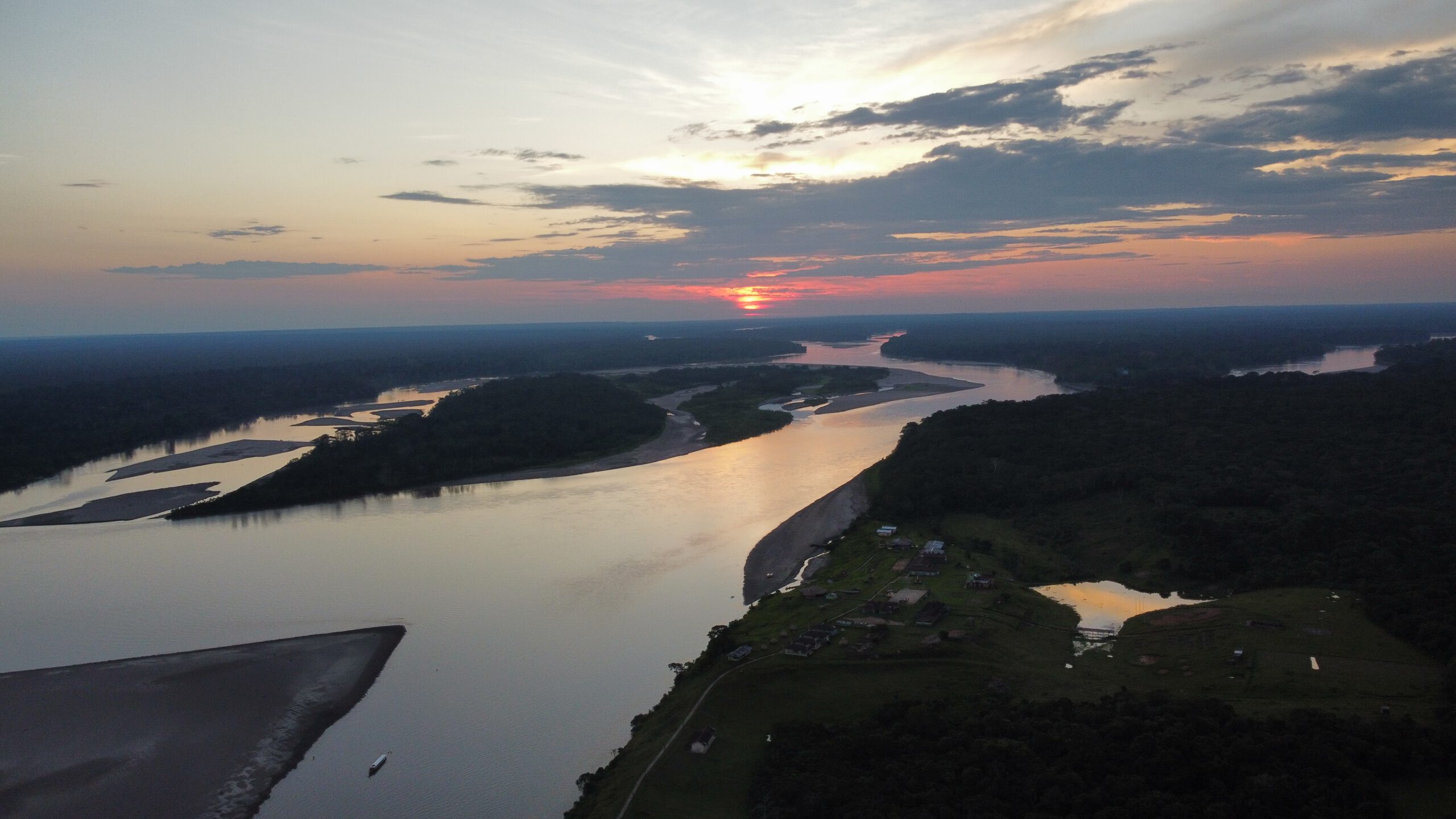
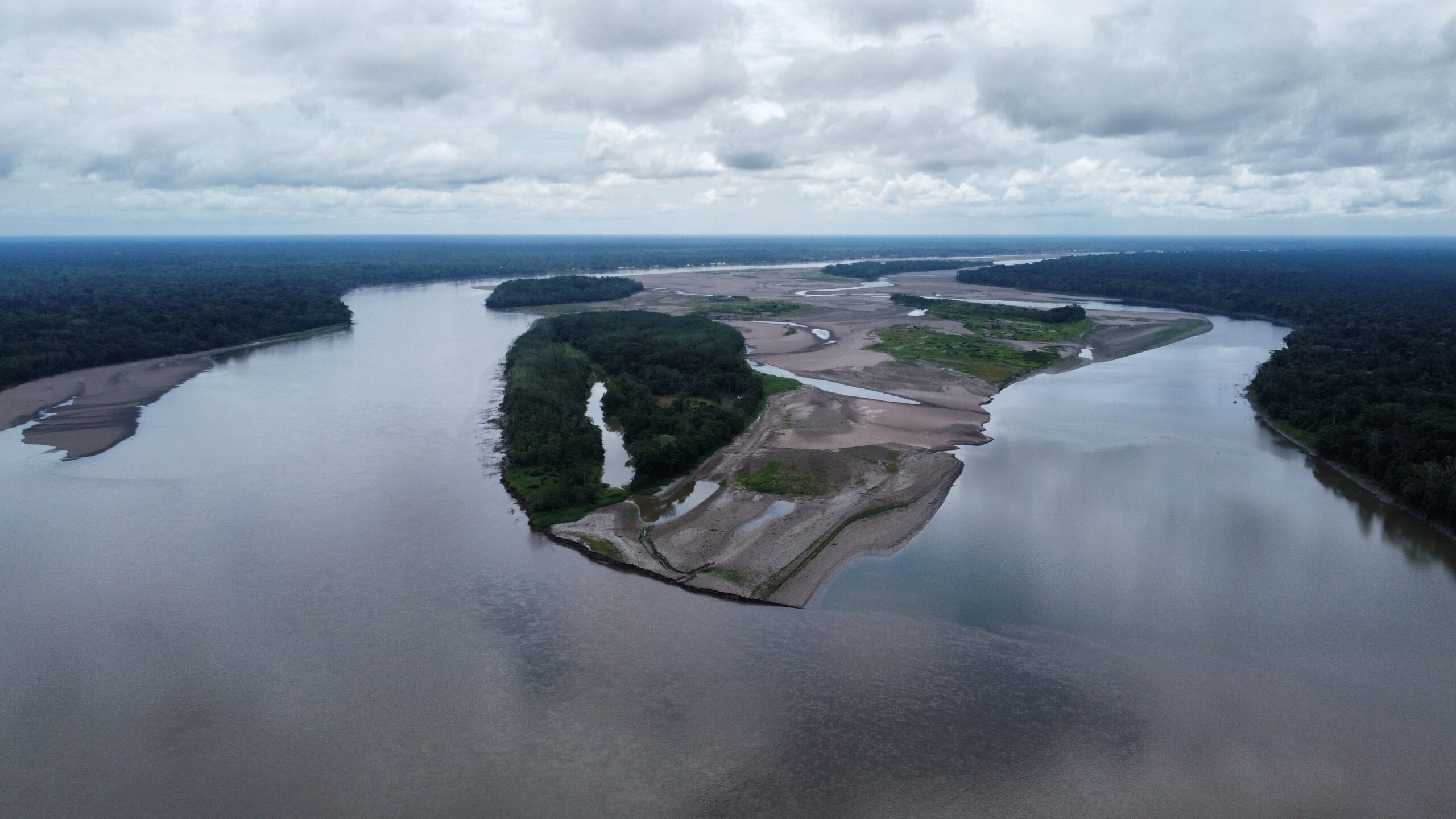
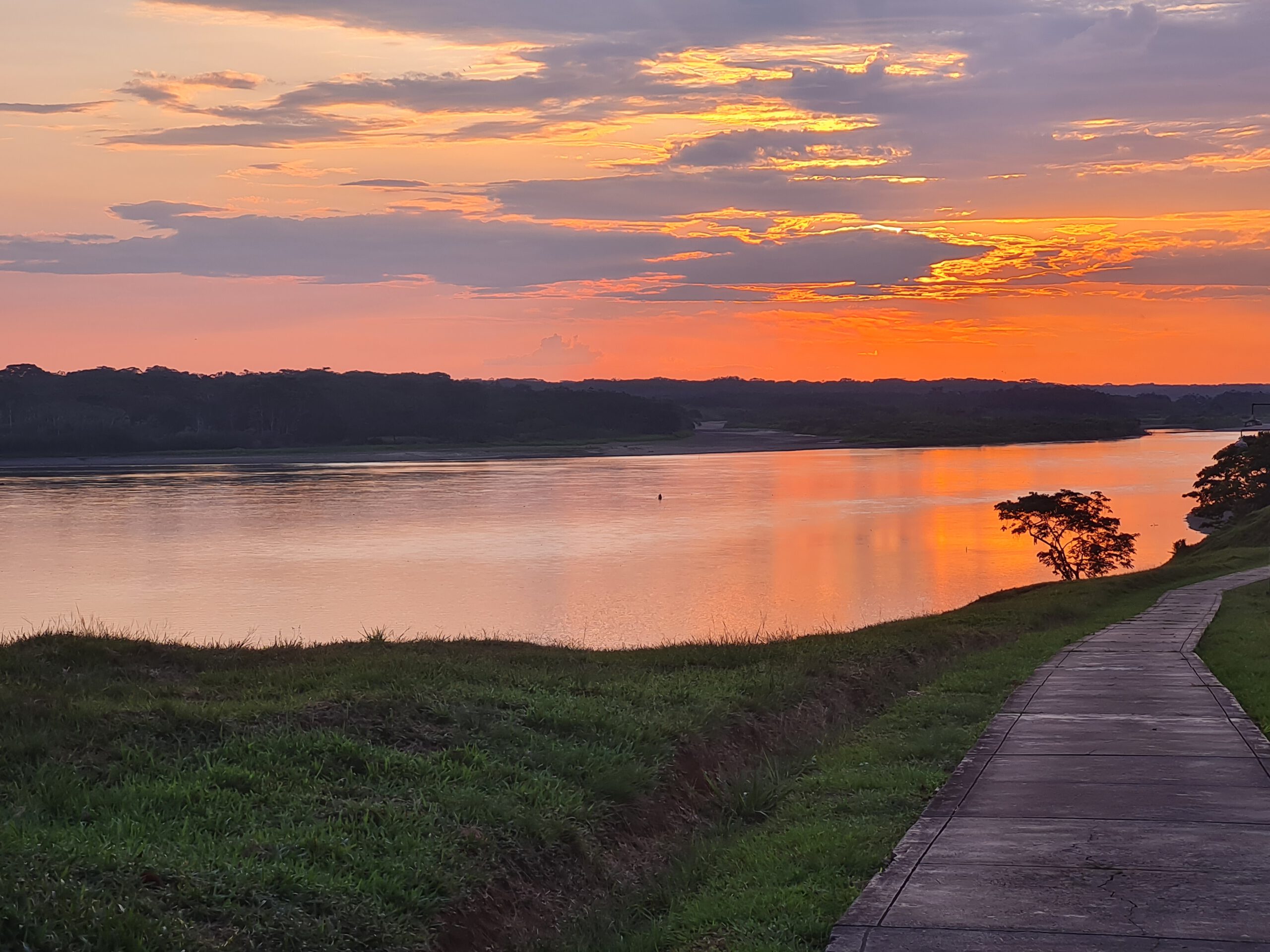
When my friend Joann from France sent me pictures a few months ago of how he had travelled across the Amazon on a boat, I knew I wanted to do the same!
Joann’s photos showed a wide boat on the Amazon with various goods and even a cow on board. And seeing the Amazon and travelling for days on the river sounded like an exotic dream to me! After all, the Amazon is the most water-rich river in the world and has more water at its mouth than the next six smallest rivers put together! The Amazon region is also home to an incredible number of animals and a large number of indigenous tribes, probably the most important green lung in the world and an absolute factor in the international climate crisis.
If we succeed in better protecting the Amazon rainforest, we will be a big step closer to climate protection. Because, as we are constantly reading, a lot of rainforest is currently being cut down: for palm oil, for soya cultivation (which is then fed to animals in Europe and elsewhere), for livestock farming, for mining (especially aluminium) and in Ecuador also for the extraction of crude oil. Just two months ago, the Ecuadorian people voted in a referendum in favour of a permanent halt to oil extraction in the Yasuni Park, one of the most biodiverse areas on earth. Former President Rafael Correa had launched a campaign in 2007 promising not to touch the oil in the Yasuni Park if international donors paid Ecuador half of the expected profits. However, the approx. 6 billion US dollars did not materialise and so he released the extraction in 2013. After long battles, environmentalists were able to push through a referendum and the government and oil companies now have a year to withdraw from the area. The decision was highly controversial due to the enormous economic importance of the oil for Ecuador.
And there has also been more and more good news from Brazil since the change of government to Inácio Lula da Silva. His predecessor Jair Bolsonaro had strongly fuelled the (illegal) overexploitation of the rainforest. Under his government, deforestation increased abruptly by 70%, corporations were supported in their deforestation and forest fires were only half-heartedly combated. For the first time, the Amazon rainforest emitted more CO2 than it absorbed.
Lula da Silva has now successfully curbed this again, so that the German government is also releasing the funds frozen in recent years. These international funds have been channelled into Lula’s plan to stop deforestation by 2030. Studies on the plan certify that it is possible to reduce deforestation by 89%. Lula in his first term of office and his successor Dilma Rousseff had already succeeded in reducing deforestation by 80% by 2019. Rapid success is now hugely important because the Amazon rainforest is at a tipping point: Around 18% of the area is currently deforested. Scientists assume that the tipping point would be reached at 20 – 25%, at which point the water cycle of the rainforest would collapse and the Amazon region would gradually develop into a savannah. The consequences for the global climate: unforeseeable, but certainly devastating!
Under another Bolsonaro presidency, this point would undoubtedly have been reached; with Lula, there is now hope. However, there is a conservative majority in parliament and the influence of the agricultural lobby is strong. So it remains exciting, just like everywhere else in the world when it comes to climate protection.
From Ecuador to Peru – Day 1
The Amazon region is also extremely exciting in political terms, so my plan had been finalised months ago. I only found out later that a large part of the journey from Ecuador to Peru doesn’t actually cross the Amazon itself, but rather the Napo tributary, but I didn’t really care:
What I have now learnt is that the Amazon River does not have its source in a mountain range, but originates in Peru from the two rivers Marañon and Ucayali. The entire area of rainforest around the numerous tributaries of the Amazon is usually referred to as the Amazon region and covers an area of over 6 million square kilometres in a total of 9 countries, about 18 times the size of Germany. With all the figures on the Amazon, it should be mentioned that there are sometimes different figures. Many things, such as the area currently being cleared, can only be estimated.
Back to my trip through the Amazon: even though many Peruvians and Ecuadorians are travelling the route and I particularly liked the fact that a few friends of mine decided to make this trip at the same time. This meant we could embark on the adventure together and it was also cheaper.
Together with Chris and Manon from Marseille and Natalie and Nicolas from Germany, we set off early on Thursday morning. The night before, we had stayed with Alex and Samantha near Coca. Friends of Joann’s who were incredibly kind and took all five of us in. I was there a day earlier and celebrated her birthday with Alex and Samantha.
We travelled from Coca at 8am on the speedboat across the Rio Napo to Nueva Rocafuerte, the last village on the border between Ecuador and Peru. The journey on the speedboat wasn’t that exciting as it was simply too fast to concentrate on the landscape in peace, but this meant that we arrived at the border much earlier to stamp out and cross over into Peru. This was recommended to us beforehand and wasn’t a bad idea because Nico was held up for over an hour: when he travelled from Colombia to Ecuador, someone had probably accidentally registered his Colombian citizenship and the officials at the border wanted to have this changed first. As the reception in the middle of the rainforest is poor, it took some time, but then we were able to take the next boat to the first village on the Peruvian side in about 30 minutes: Pantoja. Arriving in Peru was cool. Pantoja is a small village with a few hundred inhabitants. Electricity here is only generated by generators and so there is only electricity from 6pm to 11pm. So we had to wait until 6pm for the migration. We used the time to have a beer with the locals and play some music. Then we went for a swim and a walk around the village and I played a game of football with a few local kids.
A few relaxing days in the hammock – in the middle of the river
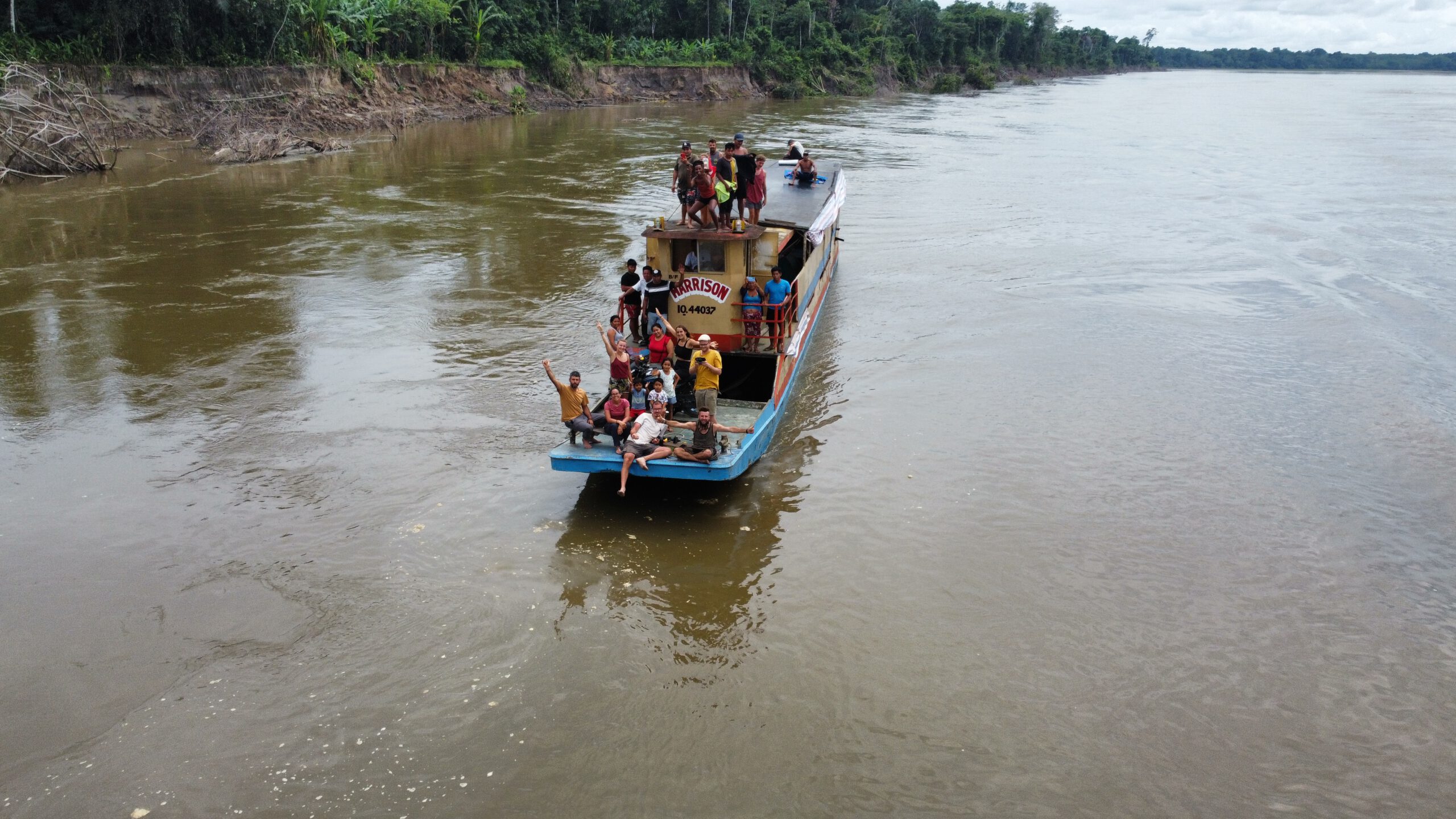
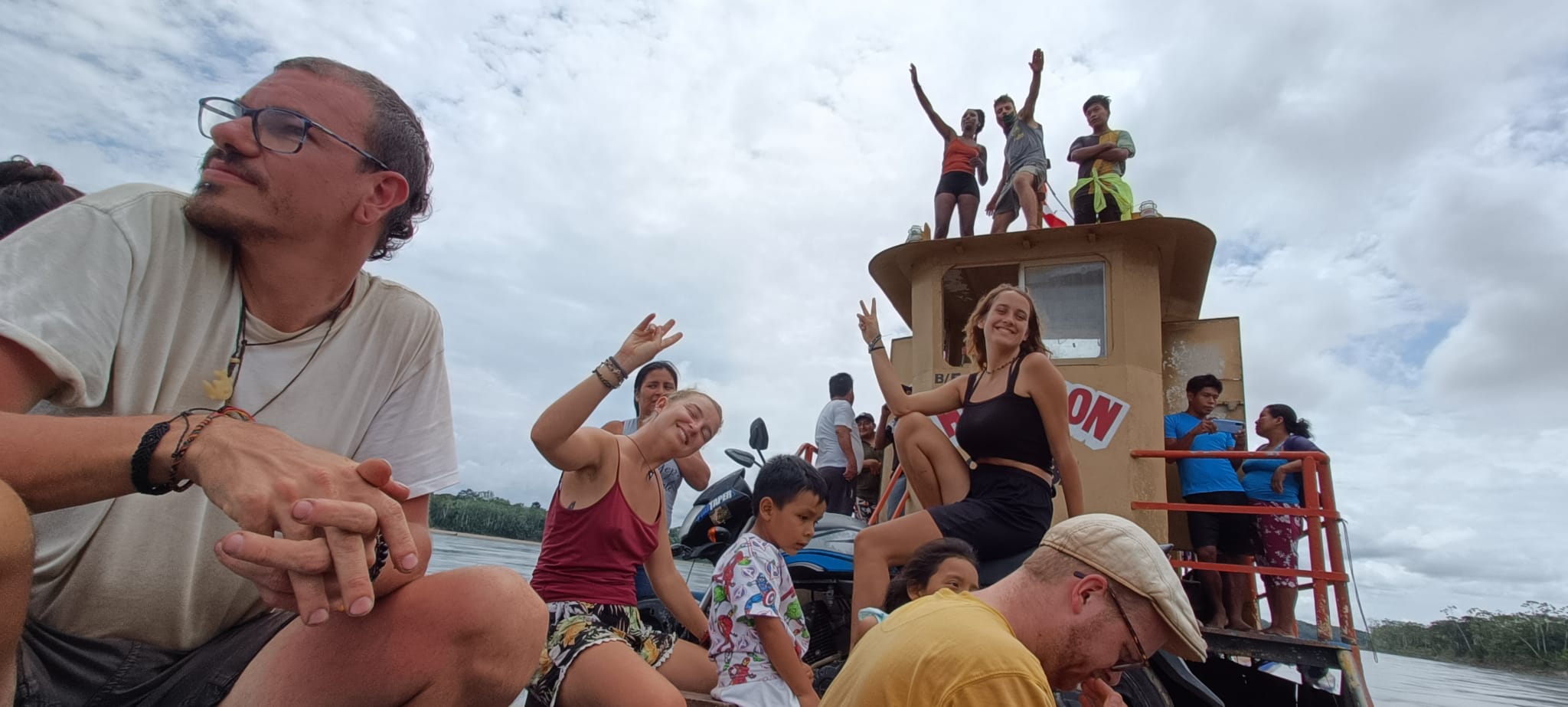
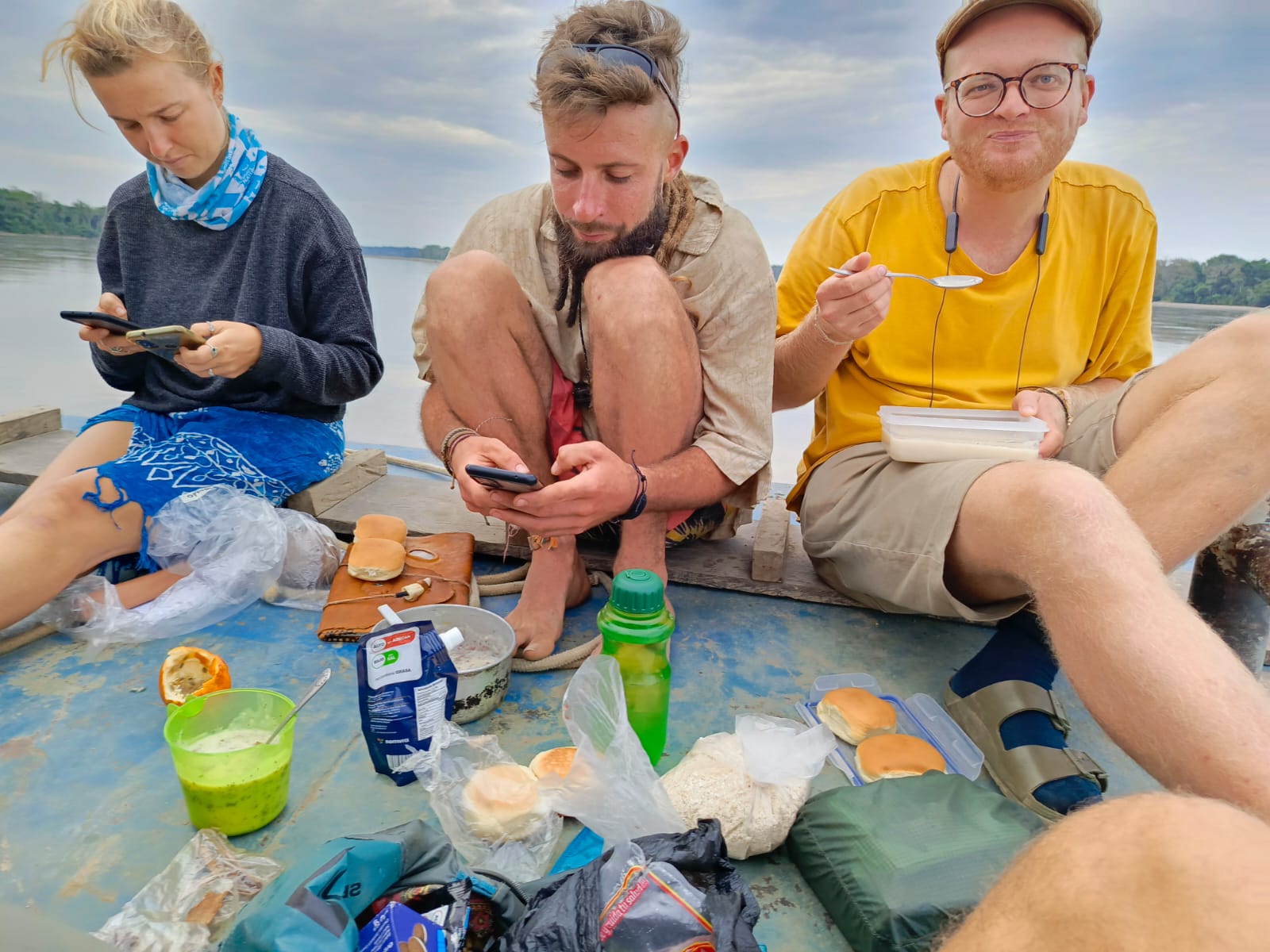
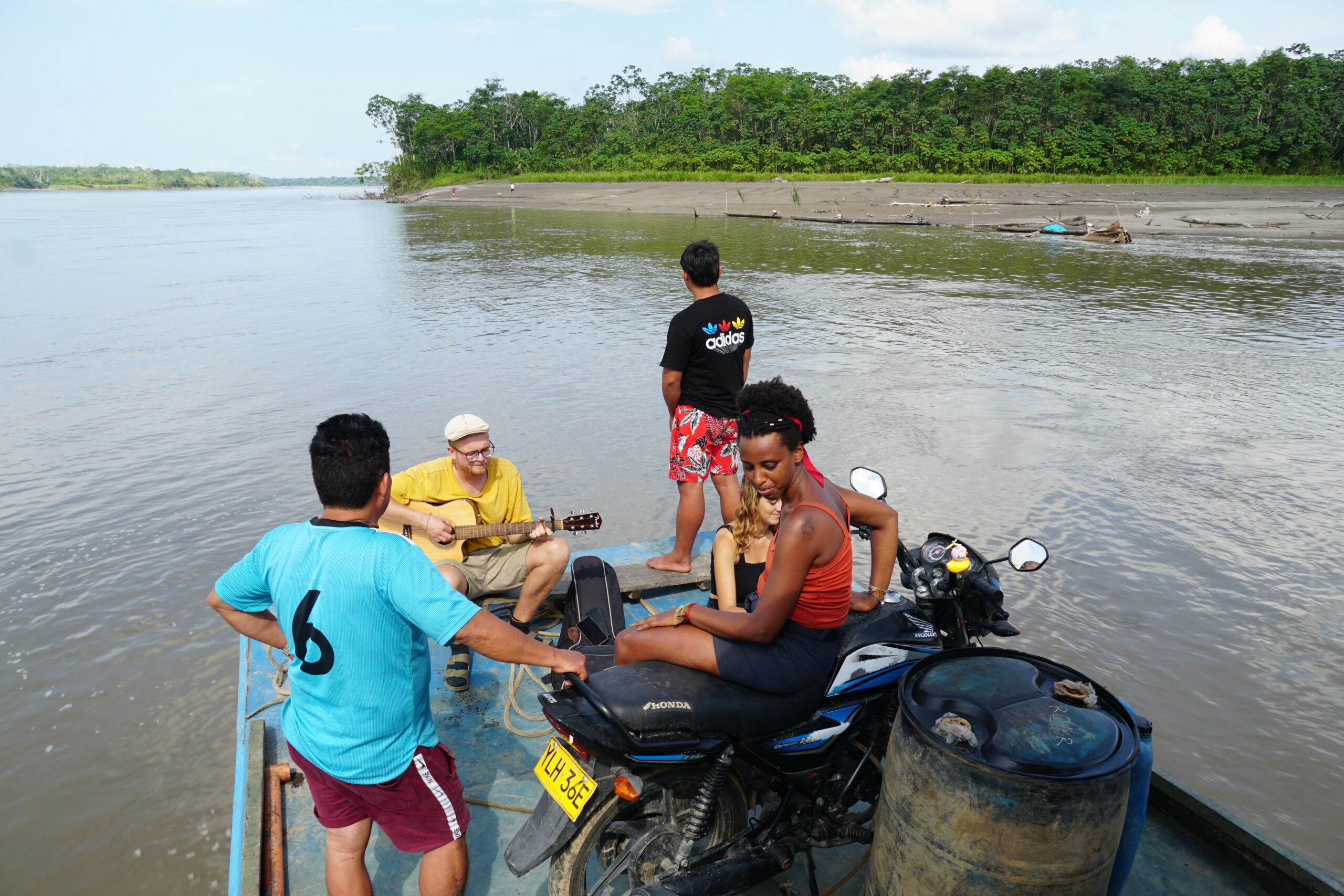
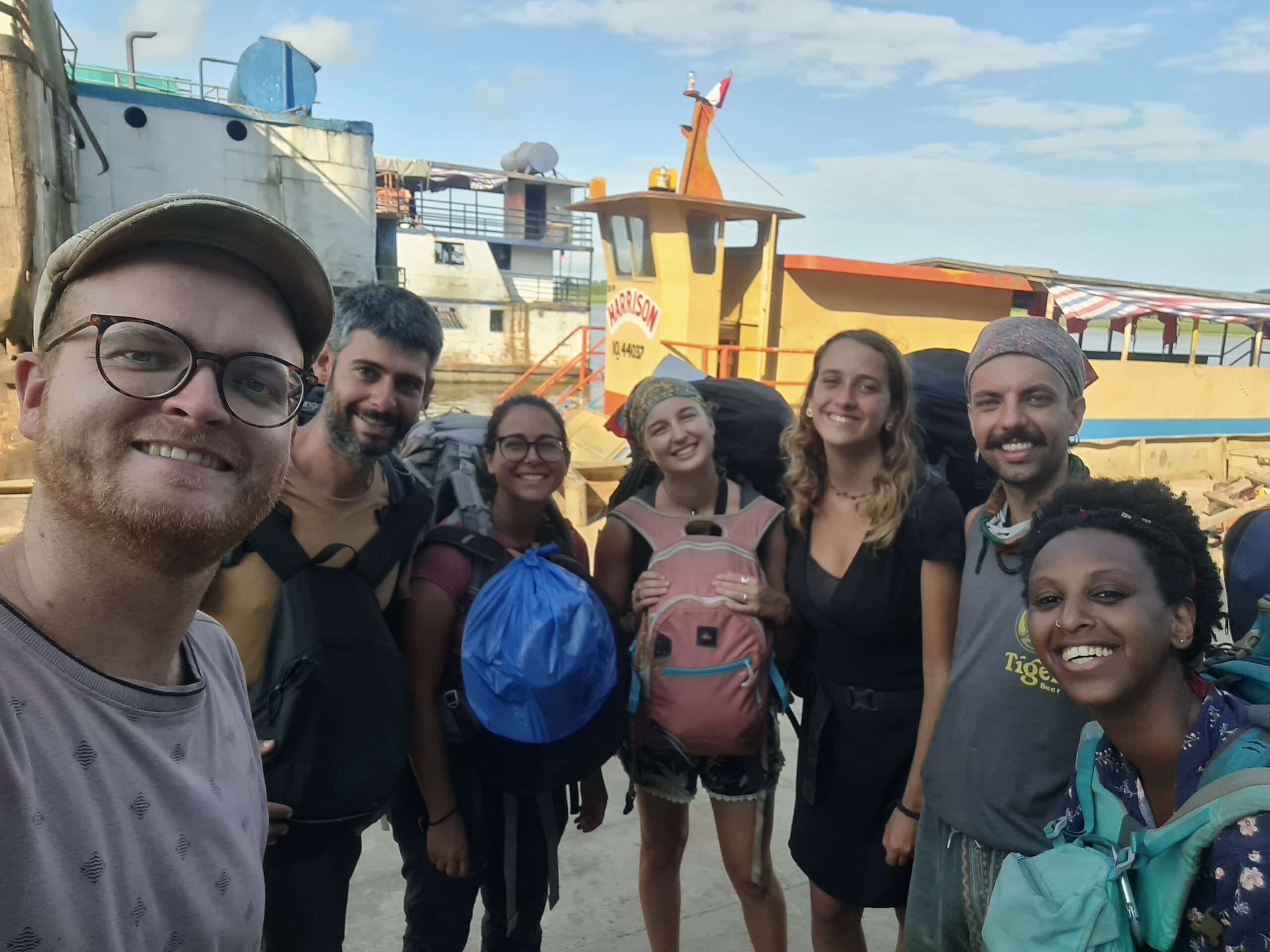
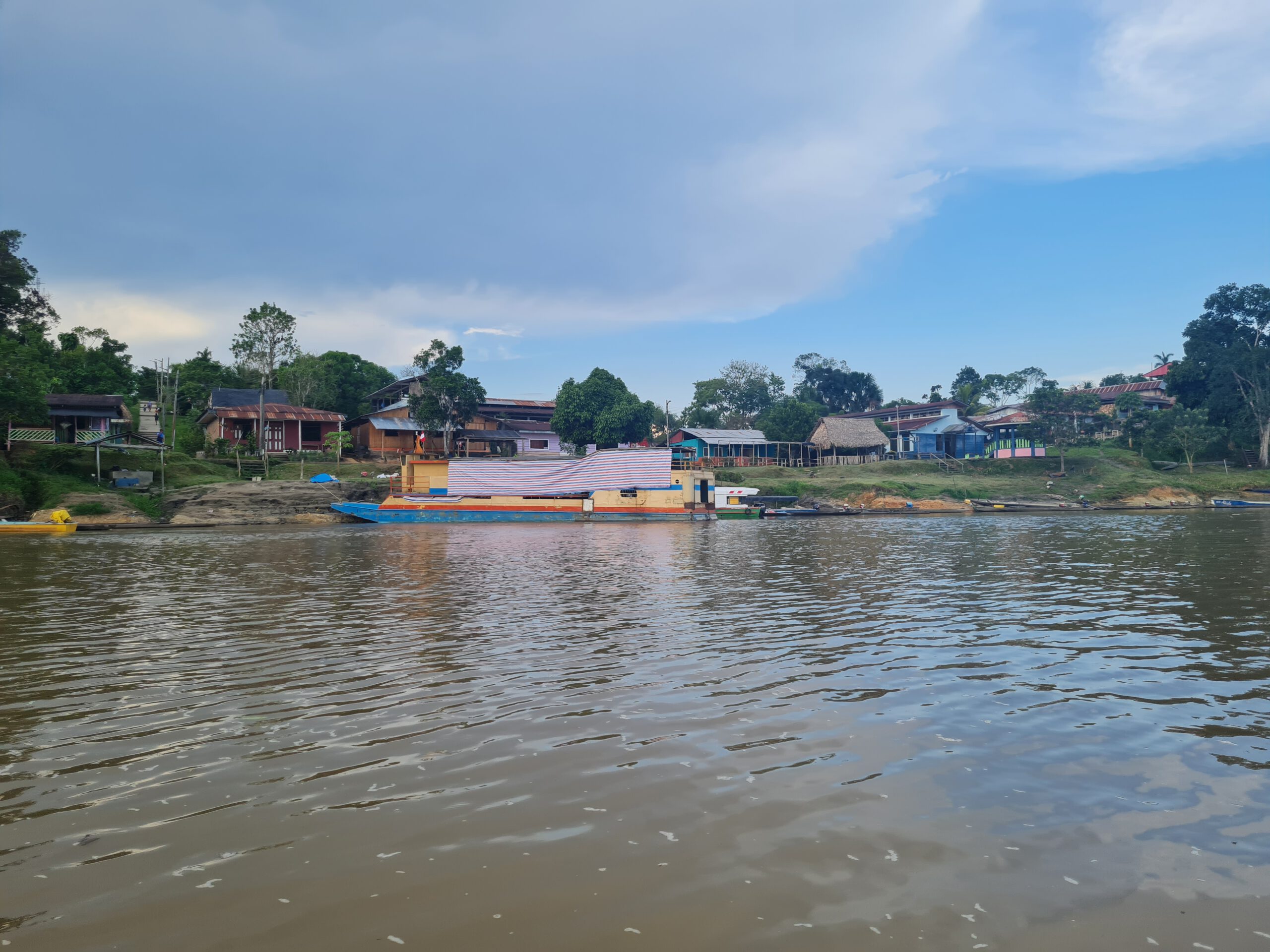
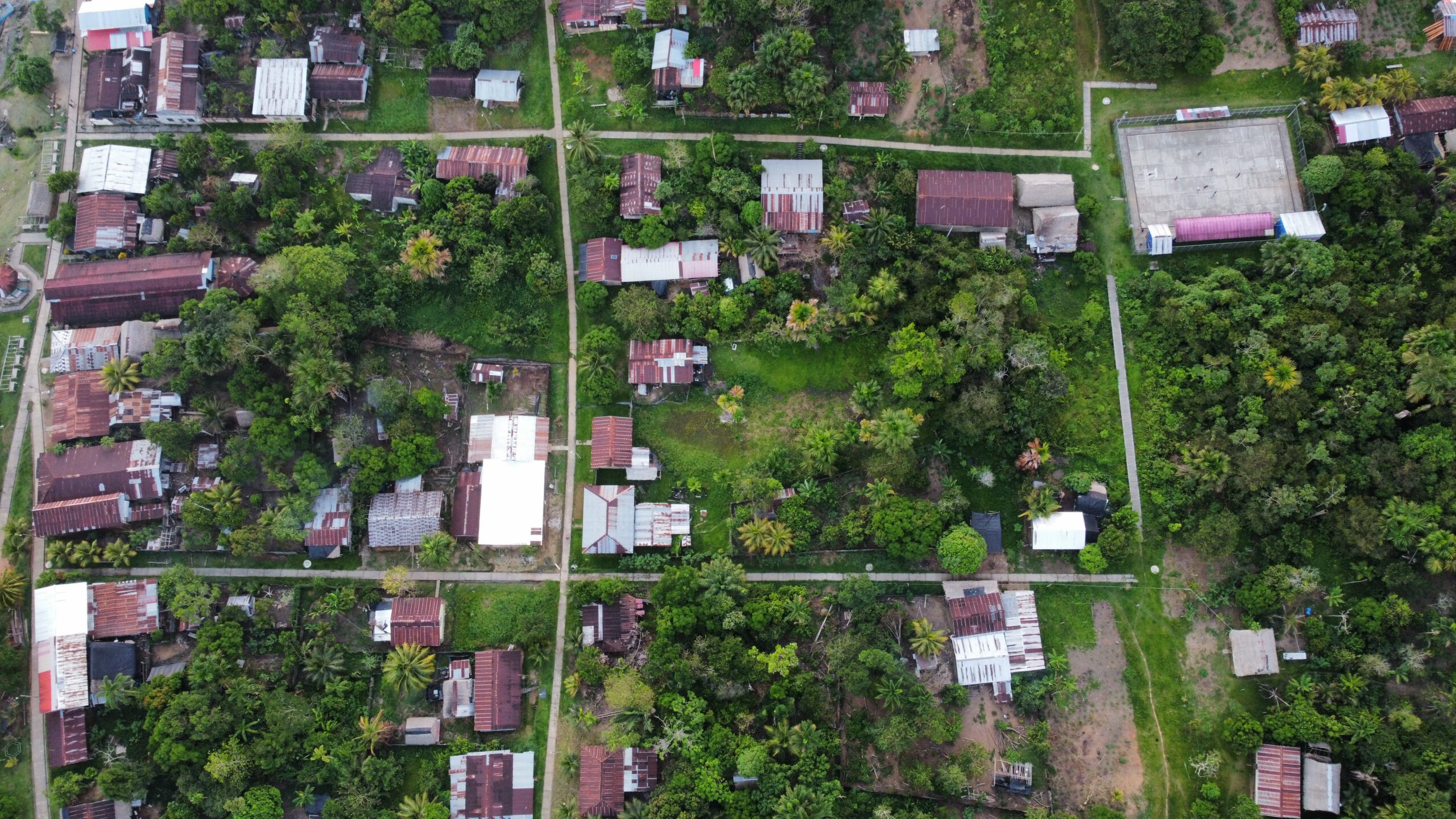
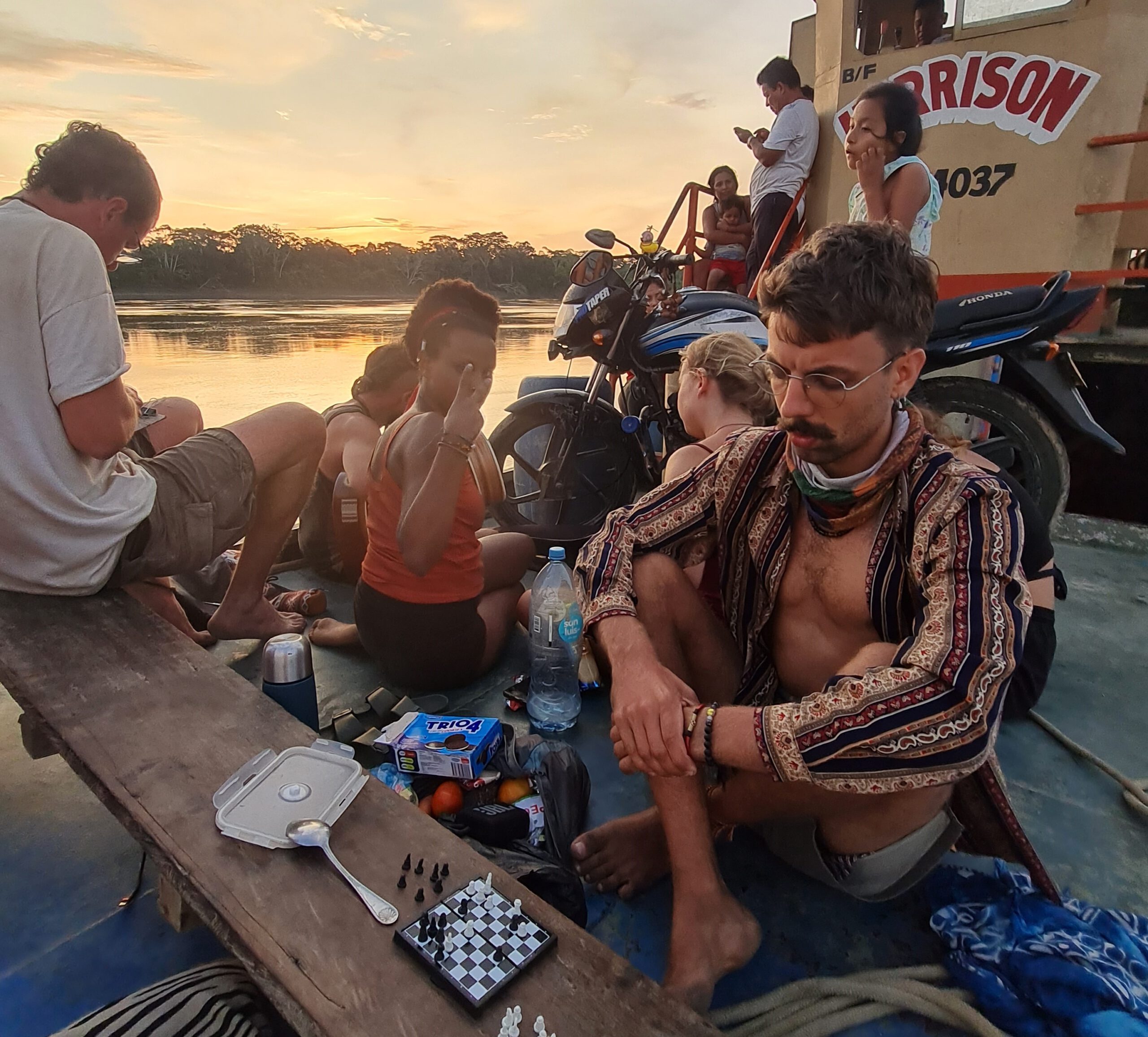
After we got our stamp, we organised our onward journey for the next day. The boat that we had heard travelled on Fridays and Tuesdays turned out to be another speedboat, which would have taken us to Iquitos in a day and a half, but we would have had to sit in it the whole time. Fortunately, we found another commercial boat, which also set off for Iquitos the next day. The Harrison travels irregularly through the Amazon region, so it was lucky that it happened to be there. Travelling on the Harrison was not only cheaper (just under 25 instead of 70 euros!), but also much more comfortable and slower: just what we were looking for to enjoy the trip across the Amazon and take in the scenery in peace. And as if that wasn’t enough, we were also able to hang our hammocks in the ship and chill out in them during the day and sleep at night – our absolute backpacker’s dream!
The next morning at 5 a.m. we were standing in front of the Harrison as ordered, but it was still a while before we set off – Peru is also in Latin America 😀
We spent a total of three days on board the Harrison, whose already slow progress was further affected by the water level. In a dry season, which was even drier than it already was thanks to climate change, there were a number of sandbanks that we had to avoid. During the day, this only cost us time, but at night it also put the crew’s nerves on edge and we actually got stuck on a sandbank once – but fortunately only briefly and we were able to free ourselves again. On the way to Pantoja, Edgar, the captain, told me, they were once stuck from 9pm until 4am. In January and February, however, during the rainy season, the river rises by several metres and the boats can simply sail through without having to worry too much. But I thought the rivers were already so full of water and impressive!
We spent most of our time on the boat together on deck, chatting, making music and playing games. I enjoyed socialising with the many Peruvians and Ecuadorians and it brought me a lot closer to the next new country on my trip.
I also used the time to sort out photos, write my blog and catch up on sleep. I found it extremely beneficial to have no mobile phone reception the whole time!
On the way, we passed many small settlements along the riverbank. The people there generally speak Spanish and an indigenous language and most of them live from farming. So it happened a few times that we were offered goods from the riverbank or from a canoe. Once the crew stopped to get a few pieces of meat for dinner. However, the farmer didn’t want to trade for goods from our boat, but only accepted cash, which seemed to surprise our crew.
On the second day in the morning, we were able to disembark for half an hour in a small village, but it wasn’t easy to buy anything as we only had dollars and hardly anyone wanted to exchange them for sol (the Peruvian currency, 1 euro equals approx. 4 soles). Nevertheless, it was nice to walk around on land and explore the village a little before continuing on. Another shore leave in the evening, which was actually only intended for dinner, was extended by a few hours so that we had time to go to a small bar with loud music and dance a little with the locals, although most of the time it was just us dancing.
Anaconda, river otter and co
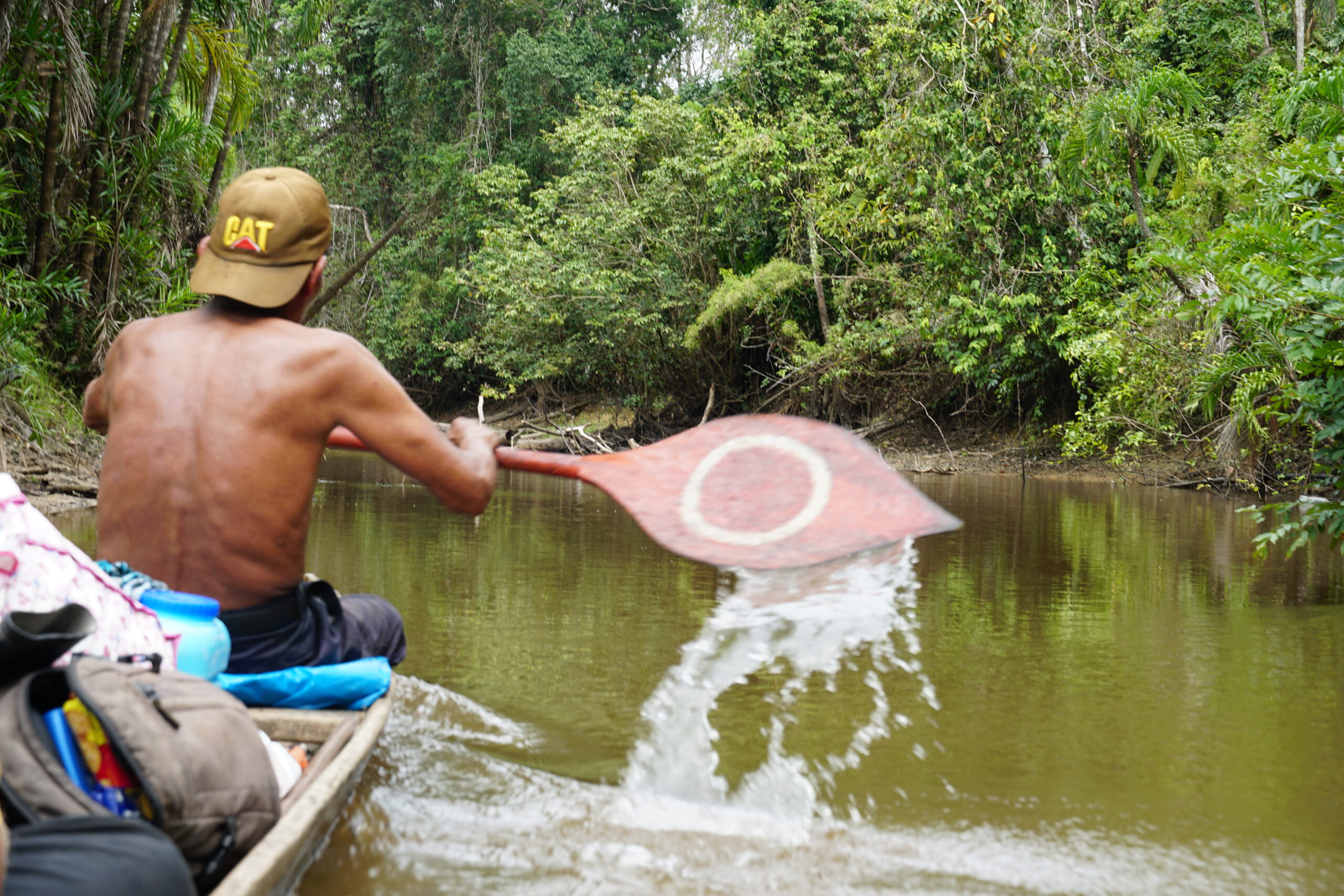
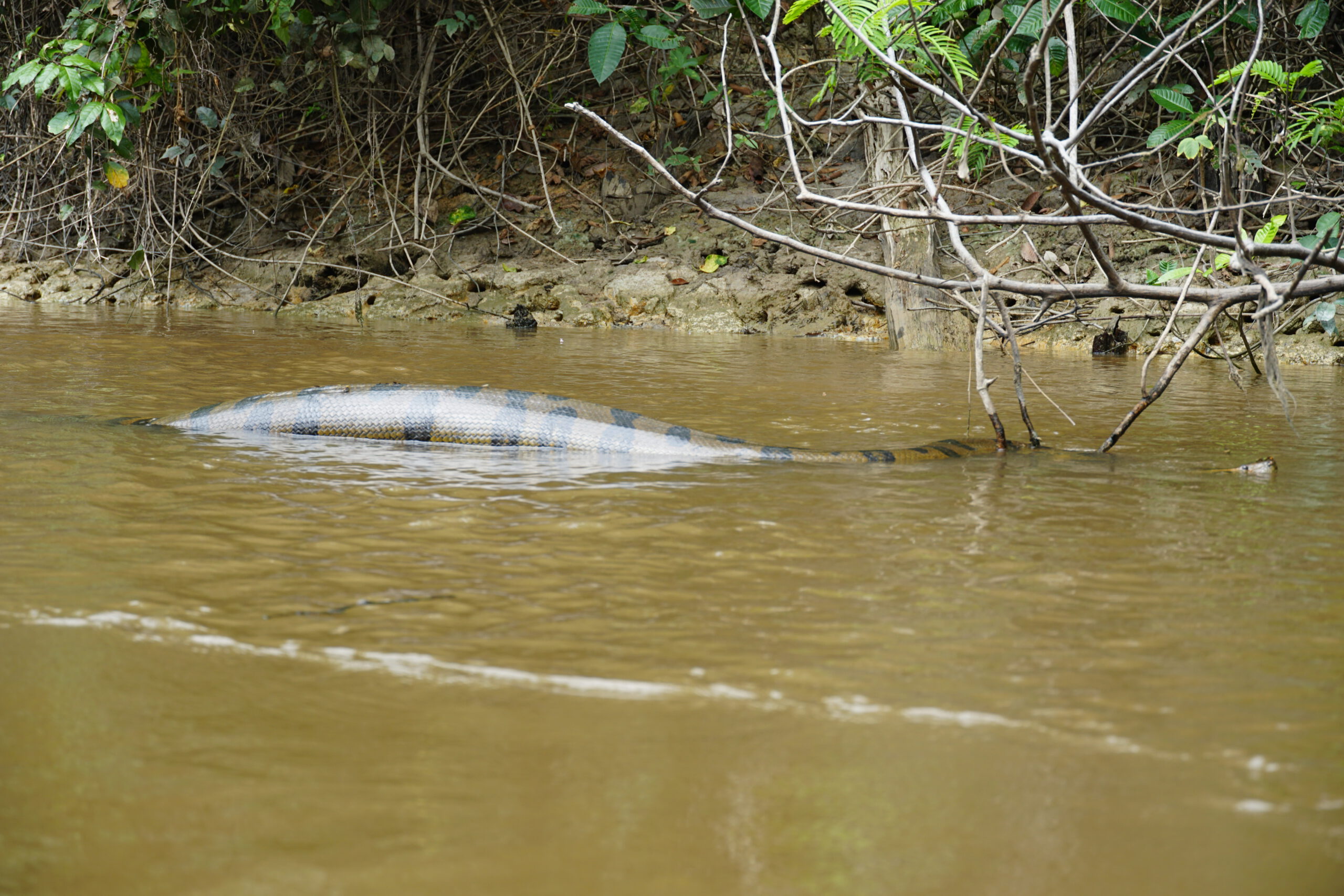
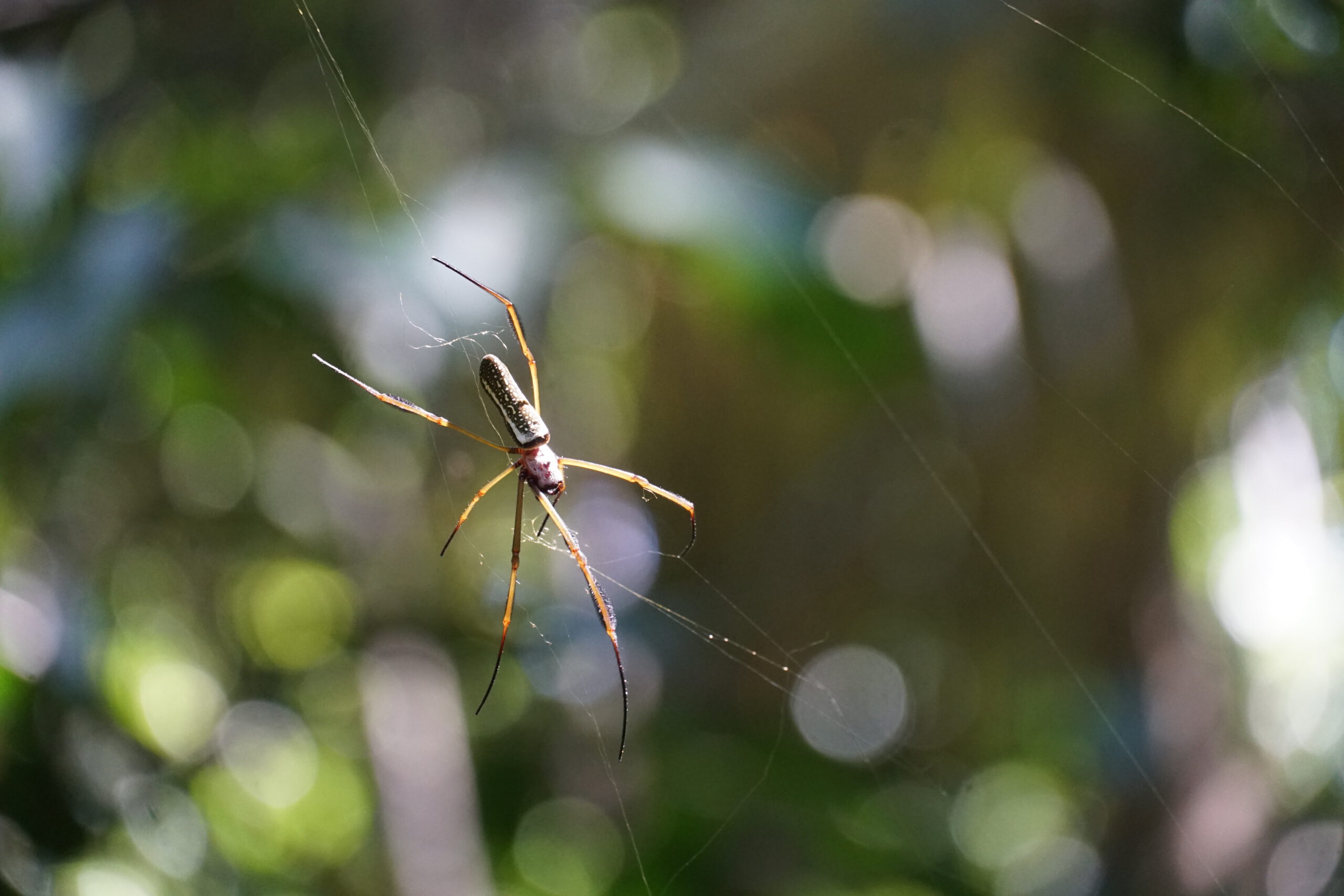
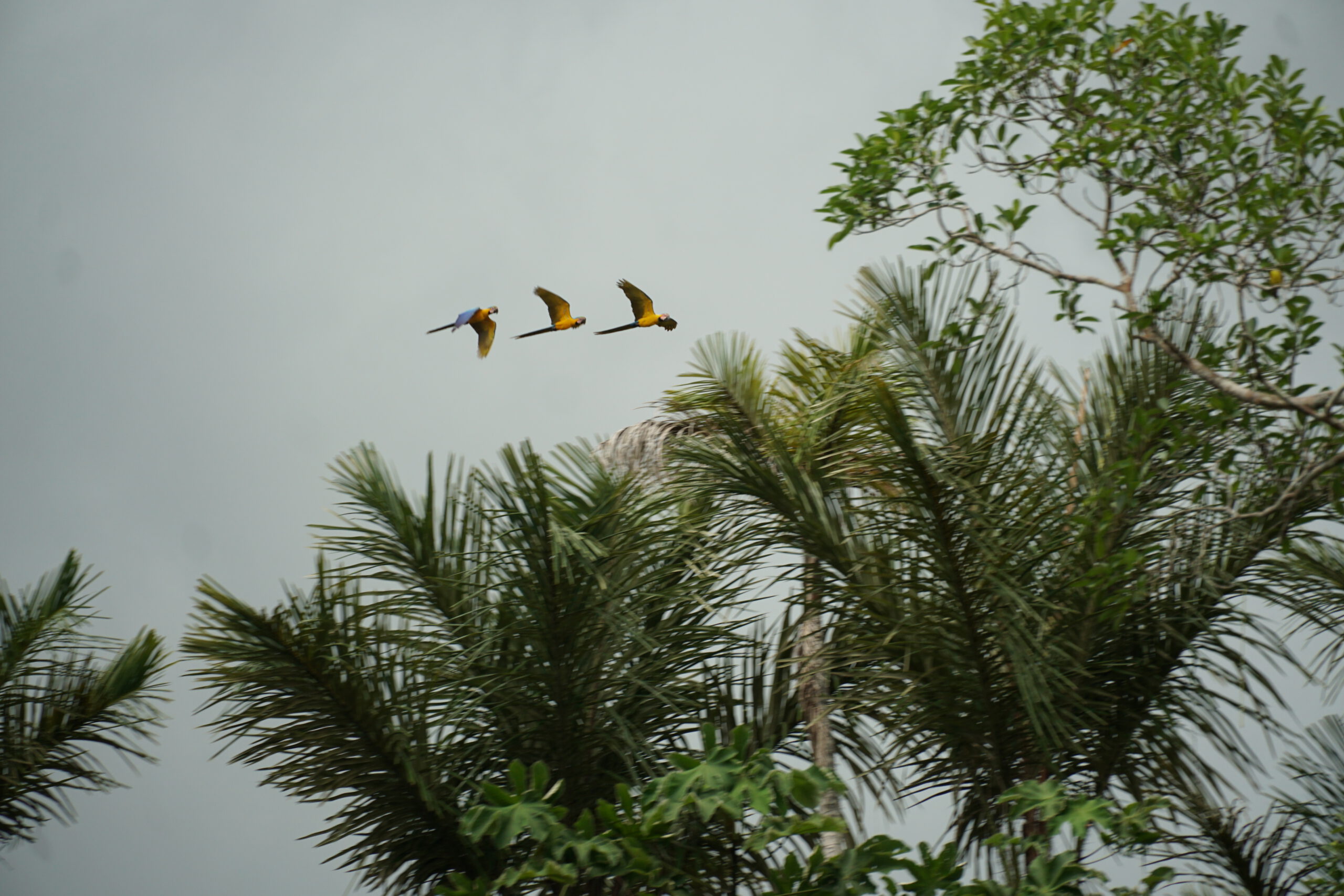
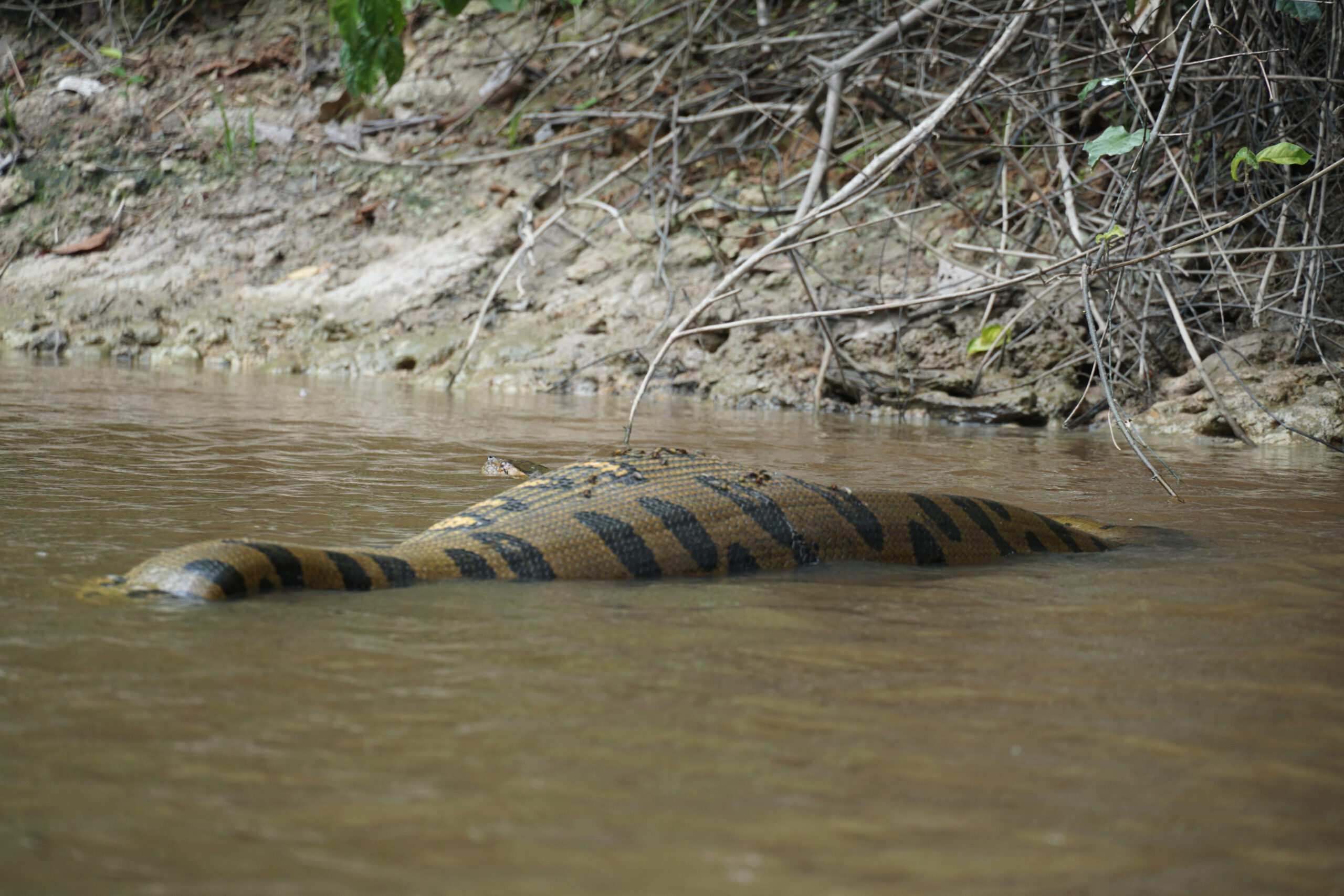
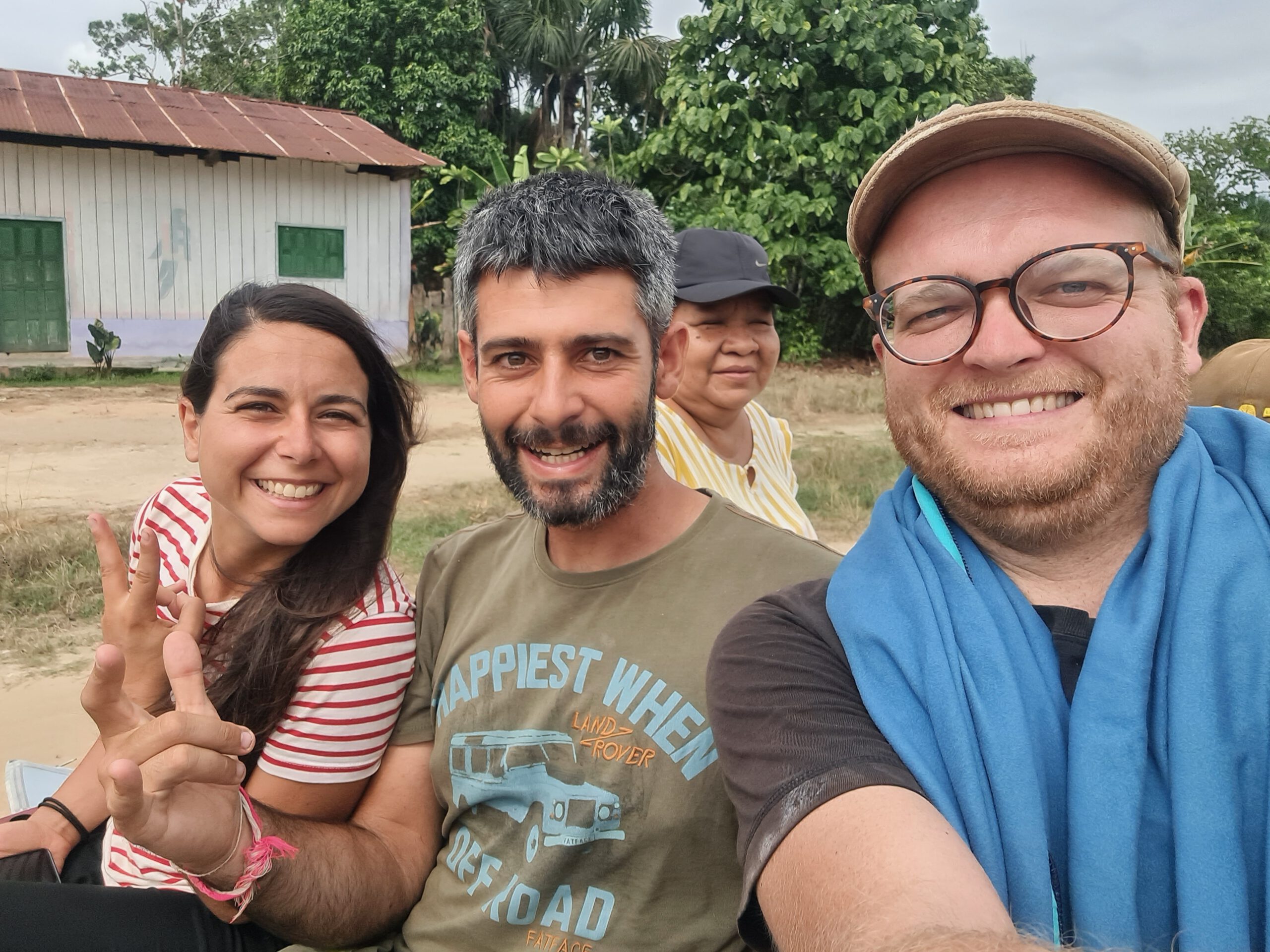
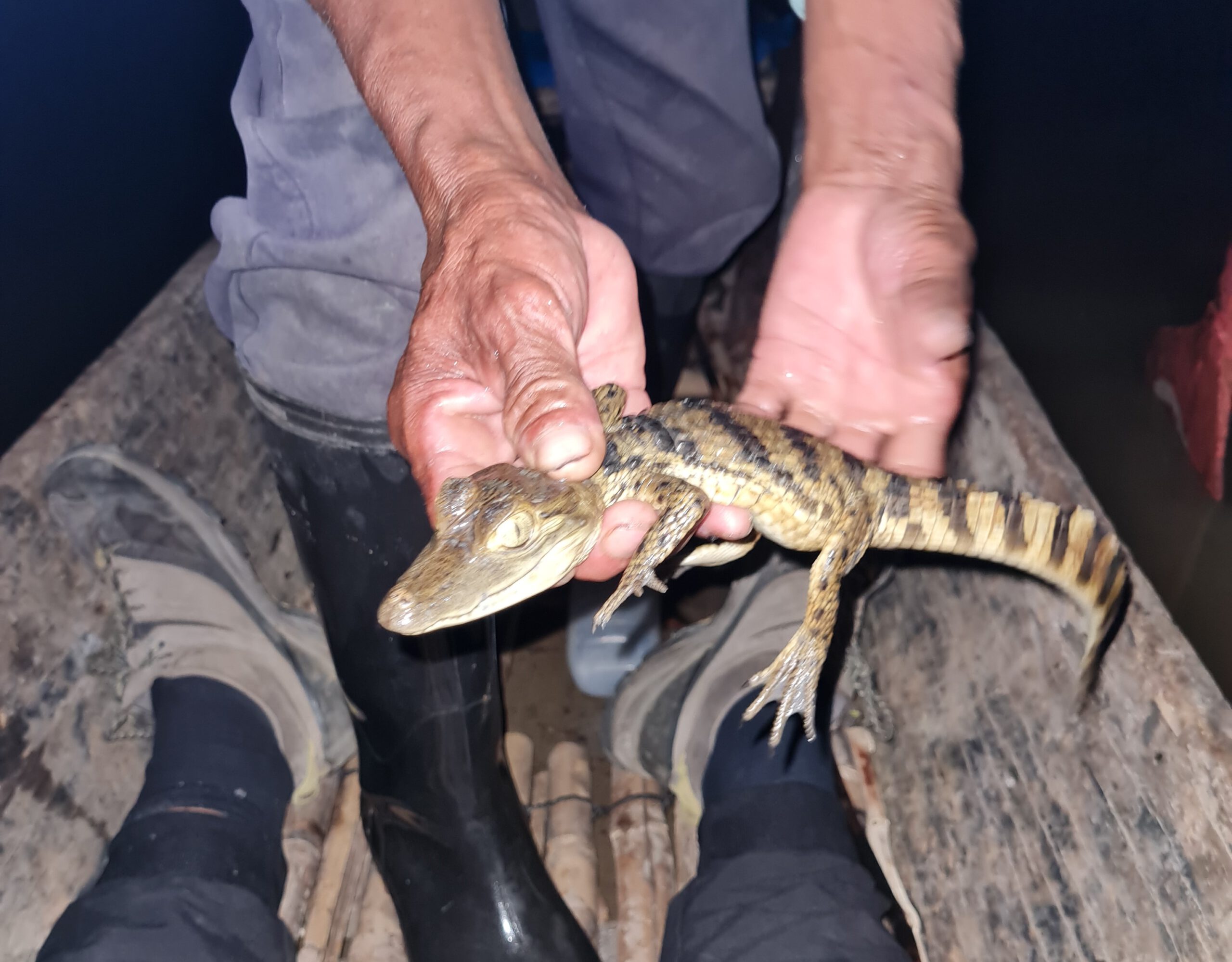
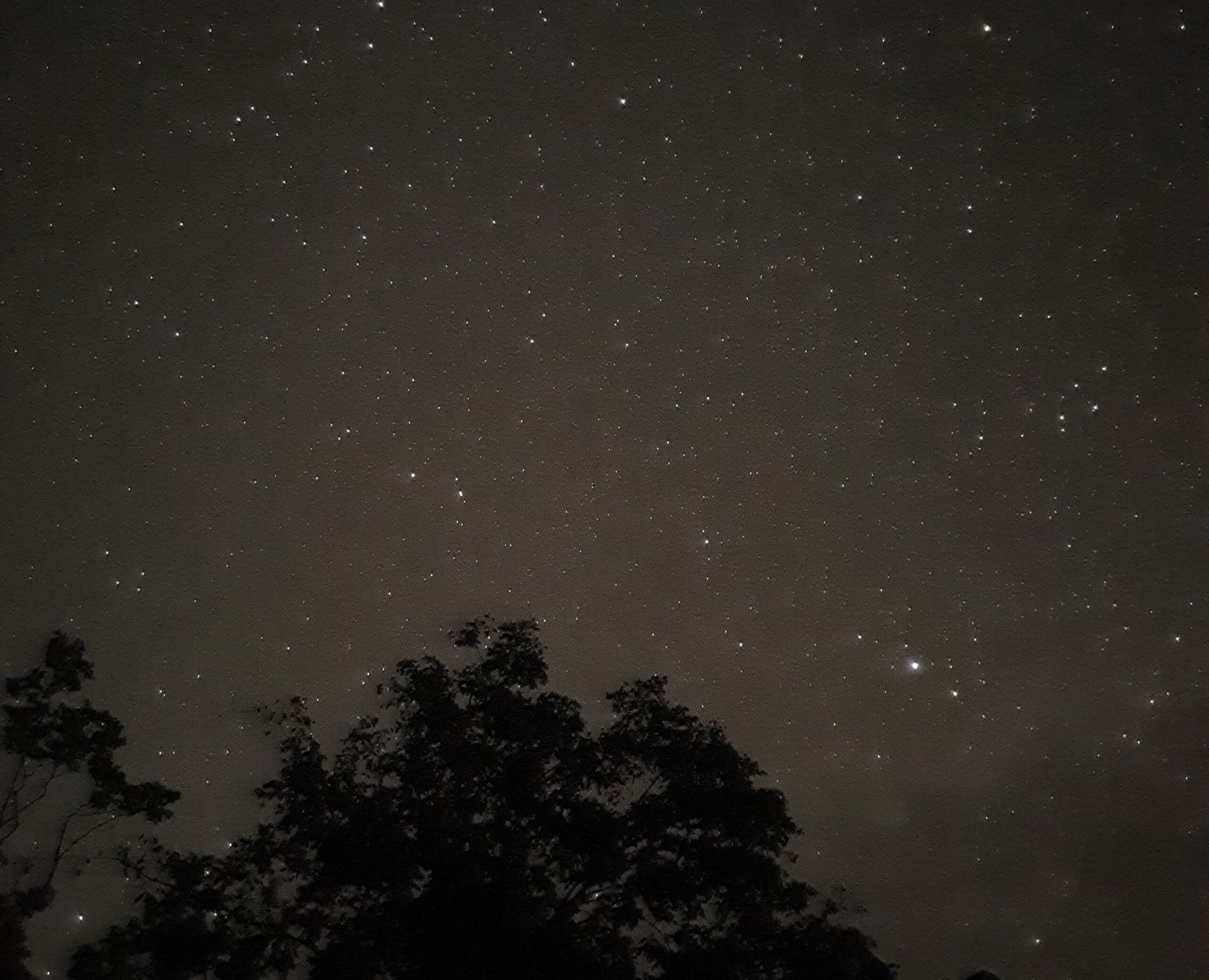
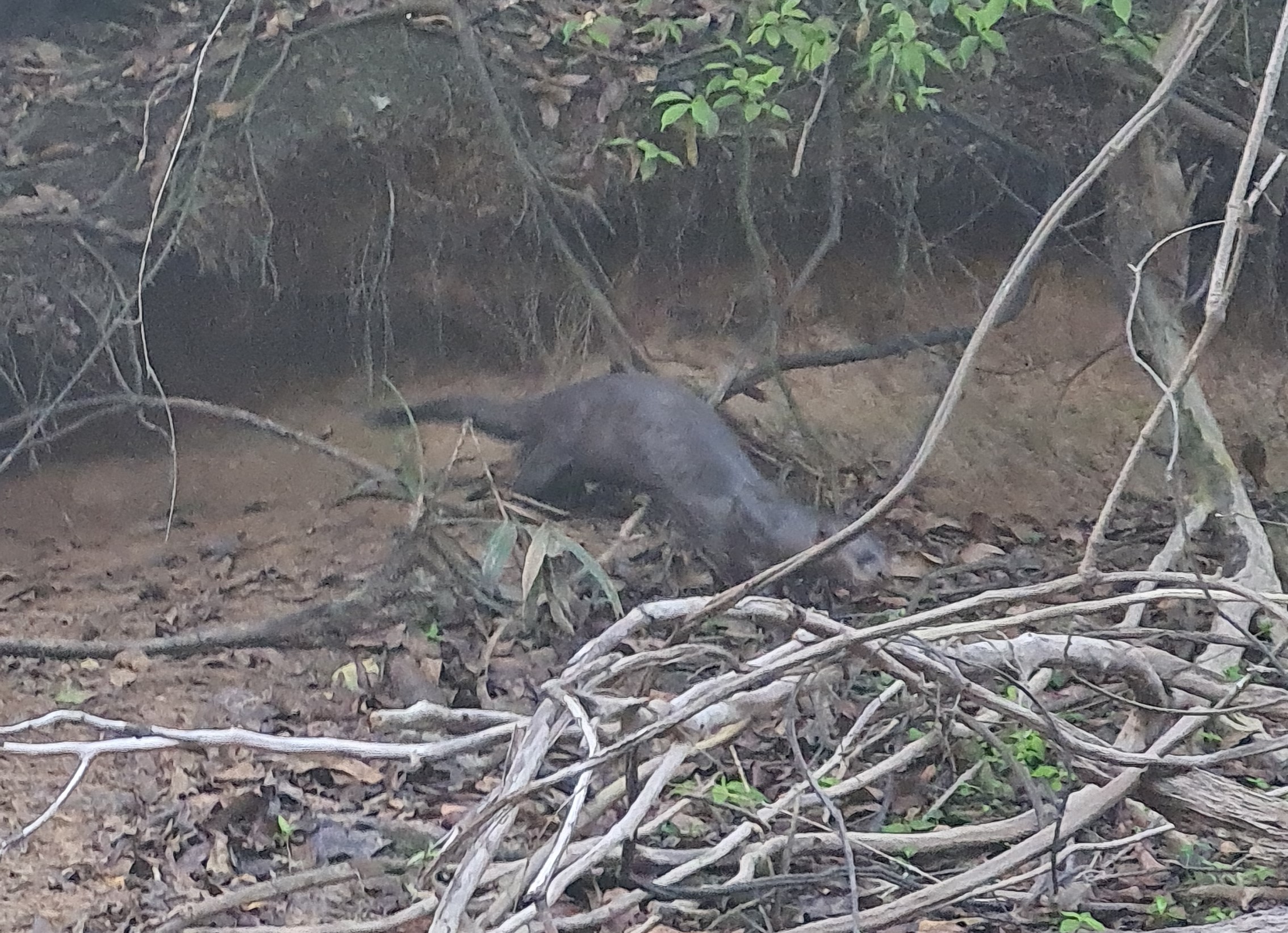
After a total of four days from Ecuador and three days on the Harrison, we arrived at our destination – Iquitos – and the days on board together were very bonding. I am still in contact with some of them and I travelled on for a few more days with a couple from Malta, Christine and Sean.
And the next few days were also super special: I got a great contact for a jungle tour via a couchsurfer, which only cost a quarter of what I was offered in Ecuador. For three days and two nights, Christine, Sean and I travelled into the jungle with two guides. We paddled through the rainforest in a small canoe along a tributary of the Amazon and saw an incredible number of amazing animals and plants. The highlights were definitely river dolphins, river otters, small caimans and a 4 metre (!) long anaconda, which had apparently eaten a caiman a few days earlier. And so my fantastic time in the Amazon region was wonderfully rounded off.
Detailed instructions for the boat adventure
Here’s everything you need to know if you want to travel by boat across the Napo and Amazon rivers yourself.
Firstly, a few basic things:
It can get pretty hot in the Amazon and there are lots of mosquitoes! So sun cream is a must and you should buy it in Coca at the latest. I also think mosquito spray is very important. I had a mosquito net with me and can also recommend it. However, depending on how fast your boat is travelling and where you are staying, you may not need one.
Depending on how you want to travel across the rivers, you need to allow some time. There are two times a week where you can cover the distance in 2.5 days, but then you’ll be travelling on speedboats and won’t be able to enjoy the scenery as much. If you want to travel on a commercial boat like we did, you’ll have to be lucky or wait a few days.
In general, the “bottleneck” is the stretch between Pantoja and Mazán. There are connections from Coca to Pantoja and from Mazán to Iquitos every day. More details below.
It is also possible to hitchhike on this route, but this can take quite a long time, as most of the boats that travel here do so for commercial reasons and therefore charge money. However, the almost 100 soles on the commercial boat from Pantoja to Iquitos was really not too much.
There are no ATMs in the small towns along the Amazon and poor exchange rates for dollars/euros. If you can, it’s best to exchange money in Coca so that you have soles with you to Iquitos.
From Iquitos you can find other boats to continue down the Amazon to Colombia and then Brazil. Or if you want to continue travelling in Peru, you can take another boat from Iquitos to Yurimaguas. There is a speedboat from Iquitos to Yurimaguas that takes around 18 hours (depending on the water level) and costs 160 soles (40 euros). Alternatively, there is also a slow boat that takes two days, but I don’t know the price.
If you want to do a tour into the rainforest in Peru, I recommend that you don’t do it from Iquitos, but from Lagunas. You’re sure to get a good price from the Acatupel travel agency if you mention my name. Marita was super nice and has become a friend. I get nothing for the recommendation, except maybe a lovely note from Marita.
All this information is from October 2023, no guarantee that the departure times or opening hours of the Migration Offices may not change. So if it’s 2025 by the time you read this, it’s best to ask again.
From Coca to Nueva Rocafuerte
As already mentioned, there are boats on this route every day. They usually start between 7 and 8 in the morning and have fixed timetables, which you can find out in Coca. To be on the safe side, you should buy your ticket the day before.
There is a speedboat that takes 4-5 hours to Nova Rocafuerte and cost us 38 dollars per person. There is also a slower boat that allows you to enjoy the scenery better and only costs 21 dollars. However, this boat takes quite a long time (approx. 7 – 8 hours), especially when the water level is low. As a rule, you should make it in time for the migration in Nova Rocafuerte, which closes at 5 pm, but there is a small risk if you want to travel to Pantoja on the same day. Because you absolutely have to check out of Ecuador in Nueva Rocafuerte and get a stamp!
From Nueva Rocafuerte to Pantoja
It’s only about 30 minutes by boat from Nova Rocafuerte to Pantoja on the Peruvian side. The boats do not have fixed departure times, but can simply be booked on site. You will probably be offered one as soon as you arrive in Nueva Rocafuerte. If you get in touch with me, I can also send you a contact.
The drivers charge around 50 dollars, regardless of how many people are travelling on the boat.
If you want to spend the night in Nueva Rocafuerte, there is cheap accommodation here or you can pitch your tent. However, if you don’t want to go to the Yasuni National Park (which is quite expensive), I recommend travelling on to Pantoja.
From Pantoja to Iquitos
In Pantoja you have to check in before travelling on to Peru and get a stamp in your passport. However, the migration office usually only opens in the evening from 6 pm, as there is only electricity by generator in the village from 6 pm to 11 pm. (as of 2023)
There is a hostel in Pantoja where we were able to stay for 4 dollars per person. Of course you can also camp here. It’s best to check which boat you take first, you may be able to sleep on the boat.
There is also a fast boat from Pantoja. This has a timetable and departs early in the morning on Fridays and Tuesdays (as of October 2023). You can buy the ticket the day before. On the first day, this boat takes you to Santa Clotilde, where you spend the night ashore. The next morning at 4 a.m. you continue to Mazán, from where you take a moto-taxi to Indiana and then another boat to Iquitos. This fast boat will take you to Iquitos at noon on the second day (third day from Coca). However, the price is quite high at 270 soles (approx. 70 dollars) and the relaxation factor is low, as you have a fixed seat on the boat.
For the alternative, you need a bit of time or luck. For us, it went really well, as a merchant ship (the Harrison, as described above) left on the same day as the speedboat. It took us three days from Pantoja to Iquitos on the Harrison. However, we only paid 100 soles (approx. 25 dollars), were able to move freely on the slow-moving boat, enjoy the view and sleep in our hammocks on the boat.
From Iquitos to Yurimaguas
There is no road from Iquitos to the rest of Peru. If, like me, you want to protect the environment and don’t want to fly, you can continue travelling from Iquitos to Yurimaguas. The best way to do this is to take a bus or a collectivo to Nauta and from there boats leave for Yurimaguas every day. Again, there are fast and slow boats. The fast boats leave in the afternoon at around 4pm and arrive in Yurimaguas at midday the next day. I paid 160 soles (40 dollars) for this boat. The slow boat takes two days and is much cheaper, but I don’t know the exact price.
Iquitos to Coca
If you want to do the route the other way round, it doesn’t really change much. You can look for a boat directly from Iquitos to Pantoja. There you can punch out, then take the same boats as described above to Nueva Rocafuerte, punch in and then there is a boat to Coca. Unfortunately, I don’t know the departure times of the boats around here. If I find out, I’ll add them here. You have to consider that this way round the whole trip will take you longer because its against the current most of the time.
Supplement: My friend Nicolas travelled from Iquitos to Coca and has compiled the following information for you:
Iquitos – Pantoja:
You can find the fast boat at Transporte Vichu in calle Maynas 360. According to Nico, they leave on Tuesdays and Saturdays and cost 270 soles.
There is no office and no fixed times for the slow boats. Nico found some in Puerto Ranza that take 4 days and cost 130 soles. But there are certainly others. If you want to do this trip, please contact me a few days in advance and then I can ask a friend in Iquitos if he is travelling the route in the near future.
Pantoja – Nueva Rocafuerte:
There are no fixed times in this direction either, but locally there are several boats that go on request. Nico paid 15 dollars together with another person who also paid 15 dollars. It is important to bear in mind that it takes longer against the current.
Nueva Rocafuerte – Coca:
The slow boat for 21 dollars departs from Nova Rocafuerte at 6am. The fast boat leaves at 12 noon and costs 39 dollars. As far as I know, there are boats on this route every day.
If you decide to do this, you’ll have a really great time and enjoy fantastic views. Have fun!

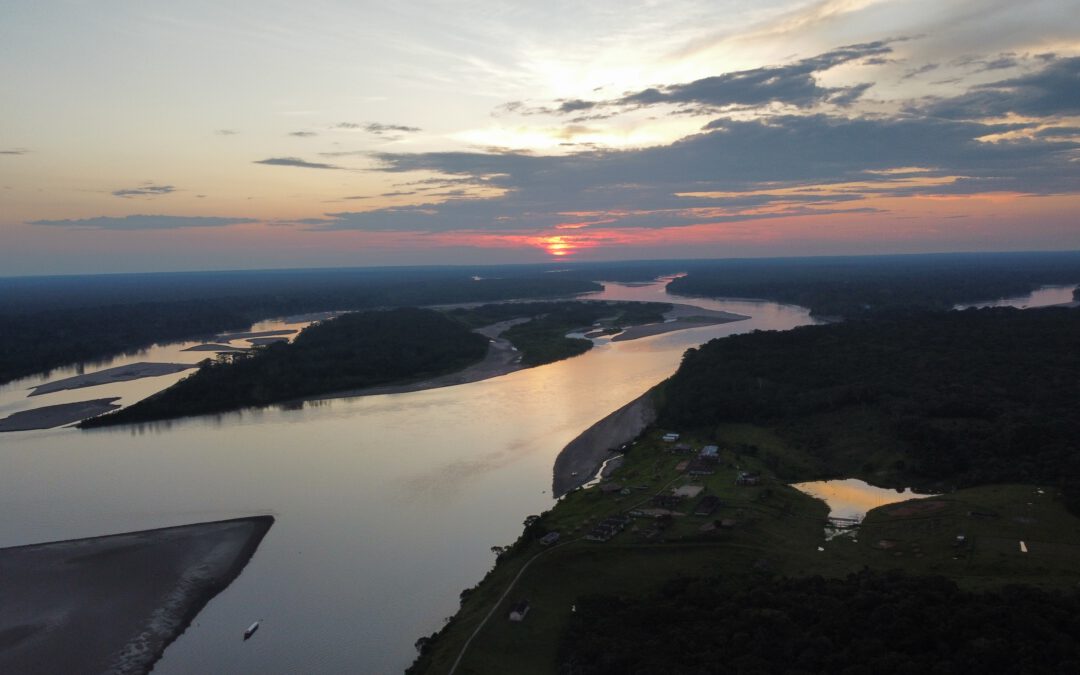
Leave a Reply